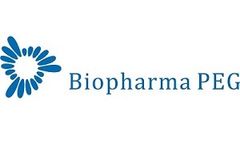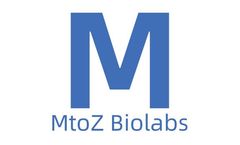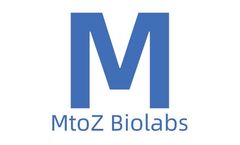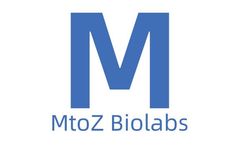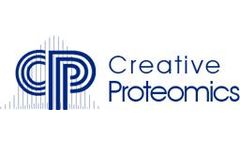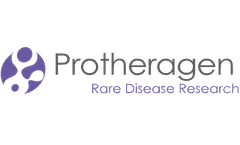Small Molecule Drug Development With Protein Small Molecule Articles & Analysis
48 articles found
Antibody-drug conjugates (ADCs) combine potent small-molecule drugs with monoclonal antibodies for targeted cancer therapy. A major challenge is loading enough drug onto each antibody without compromising solubility or circulation time. ...
As spring arrives, so does a renewed focus on cleaning, quality, and process validation in pharmaceutical facilities. Whether it’s a routine seasonal turnover or preparation for ramped-up production cycles, spring is a critical time in the pharmaceutical industry for equipment maintenance, cleaning validation, and ensuring product purity. Behind every cleanroom, batch reactor, or ...
As spring arrives, so does a renewed focus on cleaning, quality, and process validation in pharmaceutical facilities. Whether it’s a routine seasonal turnover or preparation for ramped-up production cycles, spring is a critical time in the pharmaceutical industry for equipment maintenance, cleaning validation, and ensuring product purity. Behind every cleanroom, batch reactor, or filtration ...
Recombinant protein drugs refer to protein products derived from animals or plants and developed through biotechnology research. ...
Recombinant protein drugs are protein-based therapeutic drugs which are produced by using DNA recombination technology or other biotechnological methods. These drugs include cytokines, peptide hormones, recombinant enzymes, monoclonal antibodies, and fusion proteins. Compared to traditional low-molecular-weight synthetic drugs, recombinant protein drugs have advantages such as high specificity, ...
Protein phosphorylation is an important post-translational modification process that involves adding a phosphate group to an amino acid residue in a protein, usually a serine, threonine, or tyrosine residue. Protein phosphorylation plays a key role in regulating various biological processes within the cell, including signal transduction, cell cycle, and metabolism. Therefore, detecting protein ...
In the process of new drug development, the study of pharmacokinetics is of great significance. ...
Antibody-drug conjugates (ADCs) represent a groundbreaking class of therapeutics that combine the specificity of monoclonal antibodies (mAbs) with the potent cytotoxic effects of small-molecule drugs. This synergistic approach allows for targeted delivery of the cytotoxic agent to cancer cells while sparing healthy tissues, thereby reducing side effects and enhancing therapeutic efficacy. ADC ...
Since antibody-drug conjugates (ADCs) have the molecular characteristics of both small molecule and macromolecule therapeutic drugs, when choosing analytical methods, the typical ones used for both should all be considered. ...
Alfa Cytology has announced its small molecule drug development to advance preclinical cancer research. Alfa Cytology, a comprehensive biotech company specializing in cancer research, has recently announced the cancer small molecule drug development services. The services tend to accelerate the discovery and optimization of molecule drugs with a strict quality control system. Small molecule drugs ...
Alfa Cytology has announced tumor models customization service for pancreatic cancer research. Alfa Cytology, a biotech company specializing in cancer research, has recently unveiled the service on pancreatic cancer tumor model customization to dig into the generation and development of pancreatic cancer and correspondingly provides customized plans for study. Pancreatic cancer is one kind of ...
The development of protein-small molecule docking technology is not limited to improving the efficiency and efficacy of drug development; it also opens a gateway to the future of the medical landscape. ...
Ongoing research and inventions in the field of oncology focus on the development of small molecule drug therapies for use in brain tumor resection. Small molecule drugs are being developed to target and effectively treat brain tumors to improve therapeutic outcomes. Small particles containing compounds that can enter cells and interact with specific targets to inhibit or modulate their ...
Rare diseases, also known as orphan diseases, affect a small percentage of the population, making them particularly challenging to diagnose and treat. However, thanks to advancements in medical research and technology, significant progress has been made in the field of rare disease research, from developing accurate diagnostic tools to making effective small-molecule drugs. One of the biggest ...
The classical mode of action of small molecule drugs is "occupancy-driven". Since the FDA approved the first oral small molecule targeted therapy for tumors-tamoxifen targeting the estrogen receptor (ER)-in 1977 for the treatment of breast cancer, small molecule ...
Nanogels (NGs), namely nanoscale hydrogel particles, are three-dimensional network systems formed by physical or chemical cross-linking of polymers. Nanogels have received widespread attention in recent years due to their unique properties and potential applications in various fields such as drug delivery, tissue engineering, and diagnostics.Classification of NanogelsAccording to the phase change ...
With the approval of many antibody-drug conjugation (ADC) drugs around the world since 2019, conjugate drugs have developed into one of the hottest tracks in the pharmaceutical industry. Not only the research and development of traditional ADCs continues to be hot, but various new drug conjugates (NDCs) are also blooming. In this article, we make statistics on the research and development ...
In order to more effectively deliver chemotherapy drugs, Small Molecule Drug Conjugates (SMDC), Antibody Drug Conjugates (ADC), and Degradation Antibody Conjugates (DAC) have been successively explored and developed, enhancing the therapeutic index while providing selective delivery. ...
The use of computer simulation for drug development may reduce costs and increase the efficiency and success rate of the drug development process. ...
These biocompatible, water-swollen structures are formed with the incorporation of drug-loaded microspheres or nanoparticles. Their porous nature allows the sustained release of drugs, enhancing therapeutic efficacy. ...

